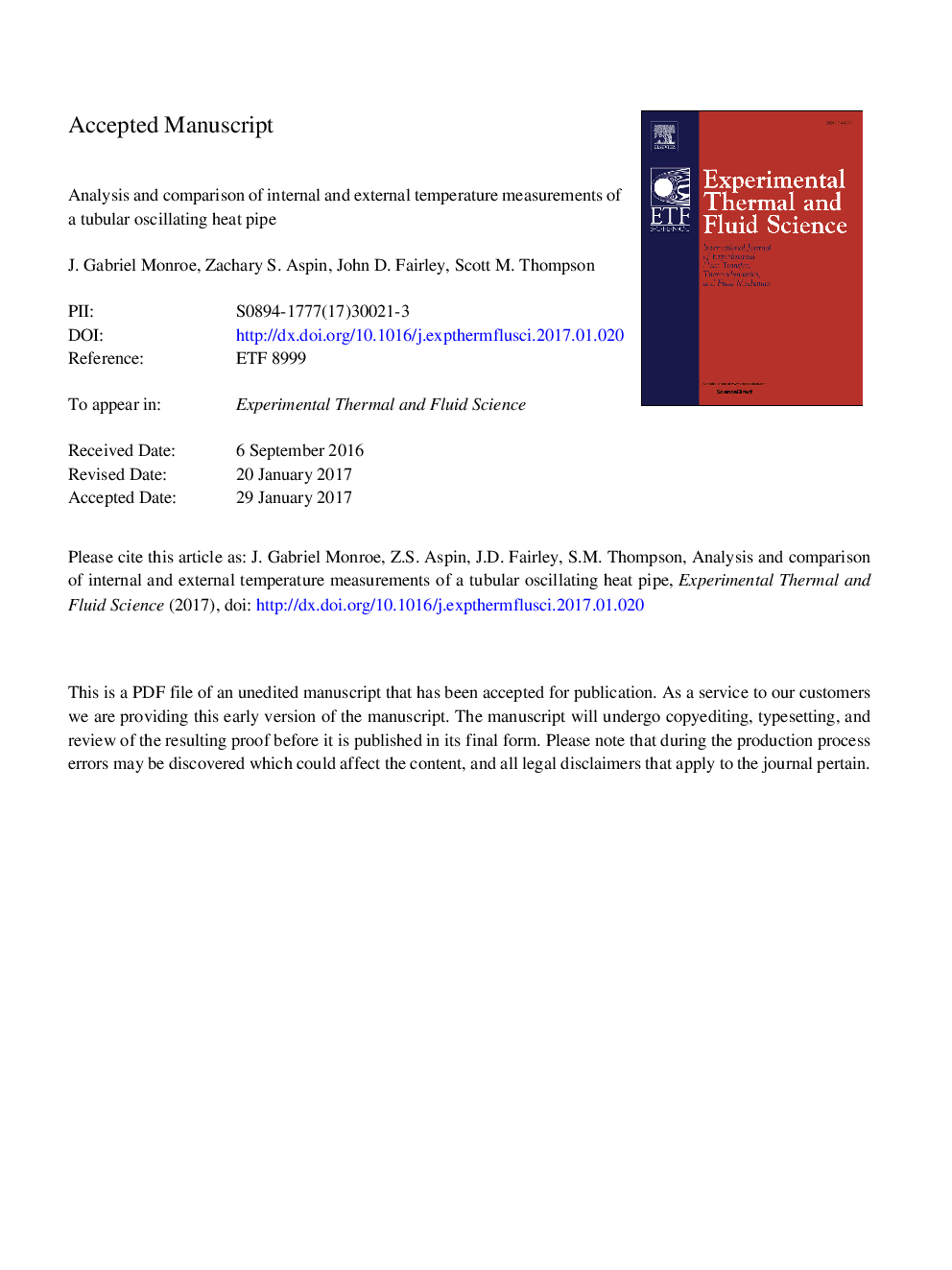| کد مقاله | کد نشریه | سال انتشار | مقاله انگلیسی | نسخه تمام متن |
|---|---|---|---|---|
| 4992634 | 1457392 | 2017 | 55 صفحه PDF | دانلود رایگان |
عنوان انگلیسی مقاله ISI
Analysis and comparison of internal and external temperature measurements of a tubular oscillating heat pipe
ترجمه فارسی عنوان
تجزیه و تحلیل و مقایسه اندازه گیری دمای داخلی و خارجی یک لوله گرمایش لوله ای لوله ای
دانلود مقاله + سفارش ترجمه
دانلود مقاله ISI انگلیسی
رایگان برای ایرانیان
کلمات کلیدی
نوسان لوله گرما، لوله پالسی گرم ضریب انتقال حرارت، هدایت لوله تجزیه و تحلیل فرکانس، ضربان مایع،
موضوعات مرتبط
مهندسی و علوم پایه
مهندسی شیمی
جریان سیال و فرایندهای انتقال
چکیده انگلیسی
The current study examines the relationship between internal/fluidic and external/wall temperature measurements along the adiabatic section of an operating tubular oscillating heat pipe (T-OHP) for varying heat inputs. Temperature measurements were achieved using type-T thermocouples located either inside or along the OHP wall in the region between the evaporator and condenser. Measurements were utilized to elucidate the effects of wall thermal capacitance, external wall temperature gradient, and internal fluid advection. The internal, single-phase heat transfer coefficient was estimated, and the effective thermal conductivity of the OHP was determined. A 4-turn copper T-OHP (3.25 mm ID) was charged with water (75% by volume) and tested in the bottom-heating condition. Heat input was varied in increments of 25 W from 60 W to 300 W. Results indicate that the external thermocouples were unable to capture frequency components larger than â¼1 Hz. Internal measurements indicate that average, evaporator-side fluid oscillation frequencies varied from â¼1.5 Hz at 60 W to â¼2.5 Hz at 300 W, whereas condenser-side frequencies remained fairly constant at â¼0.5 Hz. The frequency transfer function corresponding to the thermal resistance network between the internal/external thermocouples was found to be constant across all tested power inputs. The low-frequency, large-amplitude changes in internal temperature associated with bulk fluid motion were not immediately measured at the external OHP tube surface. The effective thermal conductivity calculated using only external temperature measurements was found to be 4-12% lower than that calculated using internal measurements. The maximum, calculated effective thermal conductivity using internal or external temperature measurements was 15,300 W/m·K and 14,000 W/m·K, respectively. This difference arises from there being a smaller, length-wise temperature gradient along the fluid columns than along the tube wall due to the strong advection component of OHP heat transfer. Tube wall conduction was found to account for 2-10% of the overall heat transfer, with its significance decreasing as fluid advection increased at higher heat inputs. The heat transfer coefficient for single-phase fluid oscillation inside the OHP was estimated to be â¼1000 W/m2 K for power inputs larger than 100 W; corresponding to Nusselt numbers between 4 and 6.
ناشر
Database: Elsevier - ScienceDirect (ساینس دایرکت)
Journal: Experimental Thermal and Fluid Science - Volume 84, June 2017, Pages 165-178
Journal: Experimental Thermal and Fluid Science - Volume 84, June 2017, Pages 165-178
نویسندگان
J. Gabriel Monroe, Zachary S. Aspin, John D. Fairley, Scott M. Thompson,
